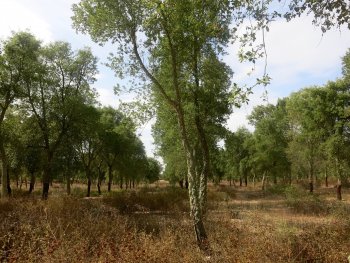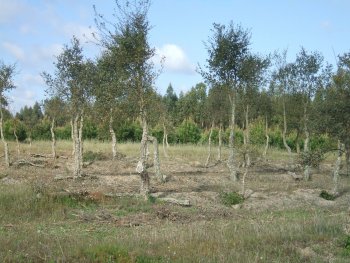Inter-tree competition patterns in un-debarked cork oak stands in Portugal
Submitted by joanaap on 1 August 2019Assess inter-tree competition in permanent plots established in un-debarked, even-aged stands located in Portugal by i) comparing with the self-thinning line and ii) assessing when stand density affects cork production, iii) stand structure and iv) tree relative growth rate (RGR) pattern over tree size. Spacing coefficient (SC) values < 1.25 are assumed to affect cork production; therefore, detecting when stand density is approaching this value is important. Relative spacing (RS) is easier to evaluate, being important to find the RS value equivalent to a SC = 1.25.


